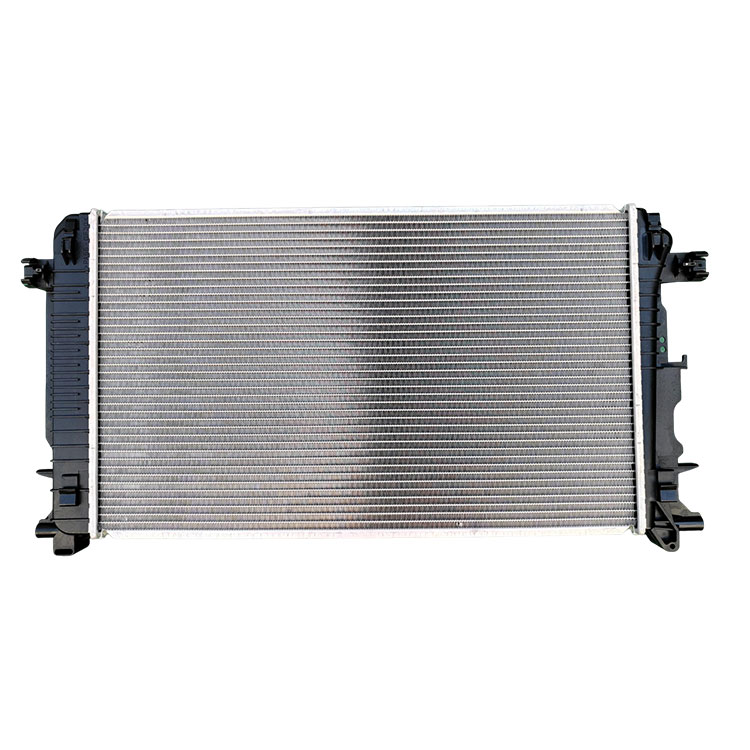Why the Auto Radiator is Critical to Your Vehicle’s Engine Health
2025-01-08
An engine is the heart of a vehicle, and just like any living organism, it requires certain conditions to operate efficiently. One of the key systems that help maintain the engine's health is the cooling system, which includes the auto radiator. While radiators may seem like a simple part of the engine system, their role is far more crucial than most people realize. In this blog, we’ll take a deeper look at the radiator’s primary function and why it’s critical to your vehicle’s overall performance and longevity.
The Role of the Auto Radiator: Cooling the Engine
At the heart of every internal combustion engine is the process of burning fuel to create power. However, this combustion also generates a significant amount of heat, which can easily cause the engine to overheat. This is where the auto radiator comes into play.
The radiator’s main job is to remove excess heat from the engine, ensuring that it doesn’t rise to dangerous levels. As the engine runs, coolant is pumped through the engine block and cylinder heads, absorbing heat from the engine components. Without a radiator to dissipate this heat, the engine would soon overheat, causing a variety of mechanical problems and potential failure.
How the Auto Radiator Keeps Your Engine Cool
The process is relatively simple but effective. Here’s how the radiator cools the engine:
1. Coolant Circulation: Coolant, a mixture of water and antifreeze, flows through the engine, absorbing heat from hot engine components, like the cylinder heads and engine block.
2. Heat Exchange: The coolant then flows into the radiator, where it is channeled through a series of thin tubes. Surrounding these tubes are metal fins designed to increase the surface area for heat dissipation.
3. Cooling with Airflow: As the vehicle moves forward, air flows through the grille, over the radiator fins. The moving air cools the coolant by carrying away the heat it has absorbed from the engine.
4. Recycling Coolant: After the coolant has been cooled by the radiator, it flows back into the engine, continuing the cycle of heat absorption and dissipation. This ensures that the engine remains at the optimal operating temperature.
Why Cooling is So Important for Your Engine
Maintaining a steady temperature is crucial for engine health. If an engine runs too hot, it can suffer from several issues, such as:
- Engine Overheating: If the engine exceeds its optimal temperature, it can cause metal components to warp or seize, resulting in costly repairs.
- Damage to Engine Parts: Continuous exposure to high temperatures can cause seals, gaskets, and bearings to deteriorate, leading to leaks or engine failure.
- Reduced Efficiency: An engine that runs too hot will become less fuel-efficient, consuming more gas and producing less power.
The radiator helps prevent all of these issues by ensuring that the engine remains at a temperature where it can function properly and efficiently.
Additional Benefits of a Properly Functioning Radiator
While the primary function of the radiator is cooling, a well-maintained radiator also offers several additional benefits:
- Extended Engine Life: By keeping the engine within the proper temperature range, the radiator helps to prolong the lifespan of the engine and prevent premature wear.
- Optimal Fuel Efficiency: When the engine is kept at its ideal operating temperature, it runs more efficiently, improving fuel economy and reducing emissions.
- Smooth Operation: A properly functioning radiator contributes to the overall performance of the engine, helping to maintain smooth operation, whether you're idling in traffic or cruising on the highway.
Signs Your Radiator May Not Be Doing Its Job
Just like any other part of your vehicle, the radiator can develop issues over time. Some signs that your radiator may not be performing as it should include:
- Overheating: If your engine temperature rises too high, it could be a sign that your radiator isn’t cooling properly.
- Coolant Leaks: Puddles of coolant beneath your car could indicate a radiator leak.
- Steam from the Hood: Steam rising from under the hood is a clear indication of an overheating engine, often caused by radiator failure.
- Coolant Discoloration: If your coolant appears rusty or dirty, it may indicate a problem with your radiator or cooling system.
The auto radiator is an essential part of your vehicle’s cooling system, playing a critical role in keeping the engine at the proper temperature. By dissipating heat generated during the combustion process, the radiator ensures that the engine runs efficiently and avoids the risks of overheating, damage, and premature wear. Regular maintenance, such as checking coolant levels, inspecting for leaks, and ensuring the radiator is clear of debris, can help ensure your radiator performs as it should, keeping your engine running smoothly for years to come. Understanding the primary function of the radiator allows you to appreciate the intricate systems that work together to keep your car in top condition.



